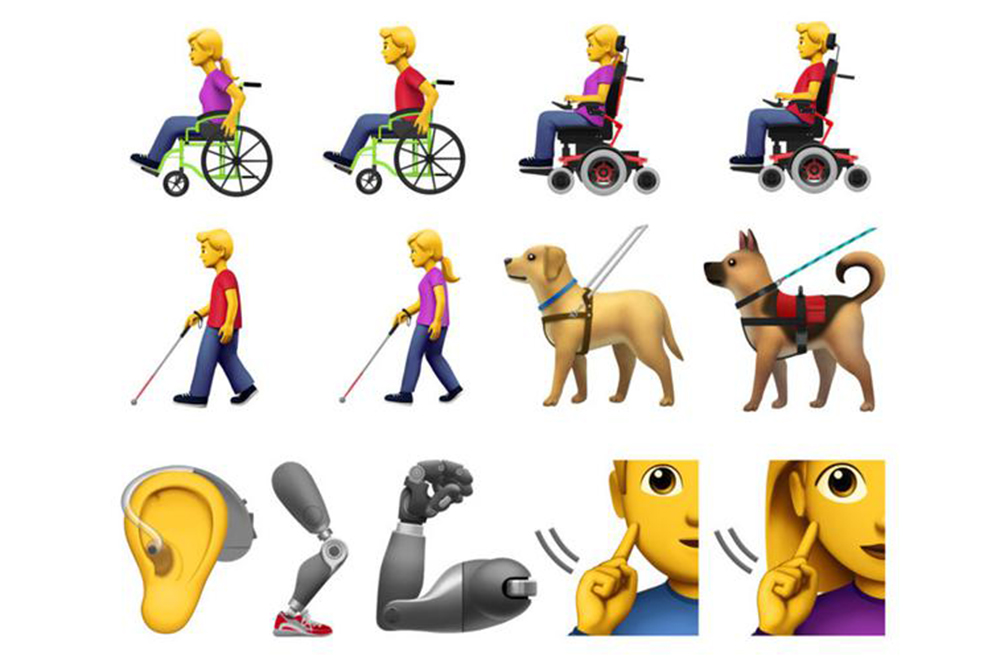Apple has launched a set of emoji characters with inclusive options in four categories: blind and low vision, deaf and hard of hearing, physical motor disability and hidden disability.
Since 2015, Apple has been working to diversify its emoji collection, but it is only now that disability inclusion has played a part in this initiative. The company said the move is designed to bring even more diversity to the keyboard and fill a significant gap in the selection of emojis.
Apple advocated for 13 new emojis that would represent disabilities and the designs were unveiled early this year. These are part of 59 new emoji characters, with 230 different skin tone and gender varieties, and which also included interracial couples and gender-neutral characters and icons.
“Celebrating diversity in all its many forms is integral to Apple’s values and these new options help fill a significant gap in the emoji keyboard,” an Apple spokesperson said in a statement.
Launched on October 28 and available via the new iOS 13.2 software update, the emoji include a guide dog, service dog, an ear with a hearing aid, a deaf man and woman, a woman and man in a motorised wheelchair and a manual wheelchair, a prosthetic arm and prosthetic leg, and a man and woman using walking canes.
Owners of various platforms, including Apple, Google, Microsoft, Samsung, Facebook and Twitter, are permitted to tweak Unicode’s designs to their own liking but are meant to ensure that each character remains recognisable from one product to another.
After consulting with disability organisations such as the American Council of the Blind and the National Association of the Deaf, Apple submitted its proposal for disability-inclusive emojis to the Unicode Consortium, the non-profit organisation that sets the global standard for emojis, in March last year. The organisation is responsible for standardising the emoji that appear on all platforms including iPhones, Android devices and computers.

